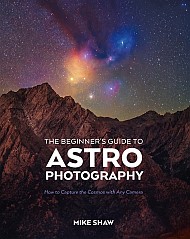Astronomy
Nanoparticles may be the secret ingredient in making ultimate plastics
Nanoparticles may be the secret ingredient in making ultimate plastics
Cheetahs naturally turned into mummies in caves in Saudi Arabia
Cheetahs naturally turned into mummies in caves in Saudi Arabia
Good Conversations Don’t Require Everybody to Agree, Neuroscience Shows
Brain imaging is illuminating the patterns linked to productive, positive dialogue, and those insights could help people connect with others
Bird Flu and Human Flu Viruses Could Mix in Cow Udders and Spark a Pandemic
Cells in cow udders could act as a site for human flu and bird flu viruses to swap genes and generate dangerous novel strains
Climate change is making trees grow larger in the Amazon rainforest
Climate change is making trees grow larger in the Amazon rainforest
The Homebuyer's Guide to Martian Settlement
Let’s say you’re in charge of a Mars mission. Okay boss, where do we land?
Destroying Asteroid 2024 YR4 Is The Best Option To Stop It From Hitting The Moon
arXiv:2509.12351v1 Announce Type: new Abstract: Near-Earth asteroid 2024 YR4 was discovered on 2024-12-27 and its probability of Earth impact in December 2032 peaked at about 3% on 2025-02-18. Additional observations ruled out Earth impact by 2025-02-23. However, the probability of lunar impact in December 2032 then rose, reaching about 4% by the end of the apparition in May 2025. James Webb Space Telescope (JWST) observations on 2025-03-26 estimated the asteroid's diameter at 60 +/- 7 m. Stu...
Black Hole Merger Provides Clearest Evidence Yet that Einstein, Hawking, and Kerr were Right
When two black holes collide and merge, they release gravitational waves. These waves can be detected by sensitive instruments on Earth, allowing scientists to determine the mass and spin of the black holes. The clearest black hole merger signal yet, named GW250114 and recorded by LIGO in January 2025, offers new insights into these mysterious objects.
Could we have cracked one of the world's toughest climate problems?
Could we have cracked one of the world's toughest climate problems?
‘Nightmare Bacteria’ Infections Spiking, Leaving Key Carbapenem Antibiotics Useless, CDC Warns
The infection rate of one type of carbapenem-resistant Enterobacterales bacteria has risen by more than 460 percent in recent years. Scientists say people receiving treatment in hospitals are at highest risk
Huntington’s disease breakthrough: what to know about the gene therapy
Huntington’s disease breakthrough: what to know about the gene therapy
What Is Leucovorin, the Unproven Autism Drug Backed by Trump Officials?
The Trump administration is backing leucovorin as a treatment for autism, despite limited evidence. Some doctors and researchers are concerned


